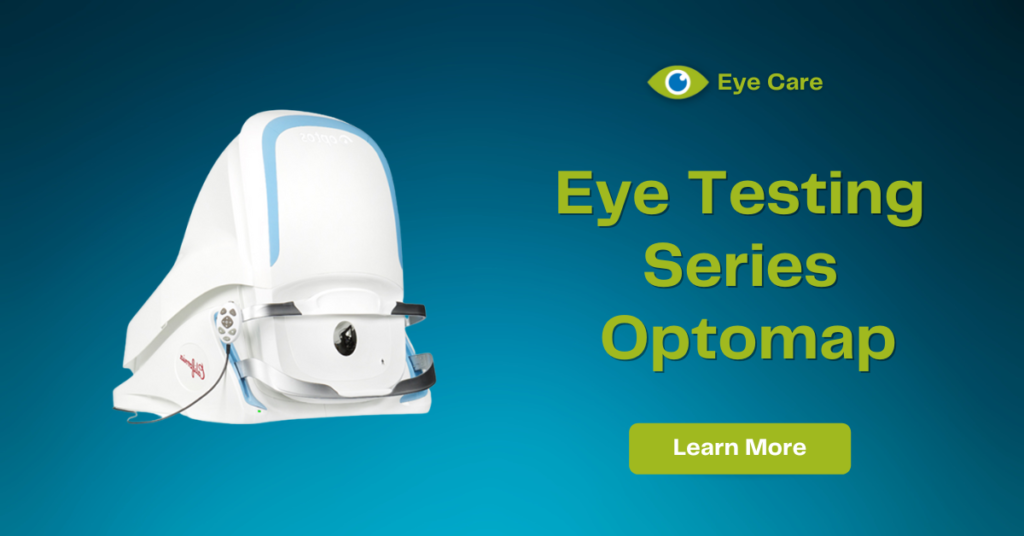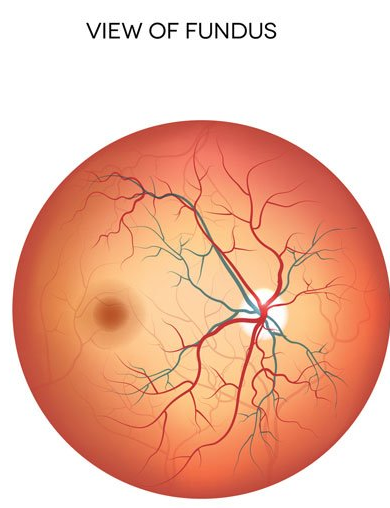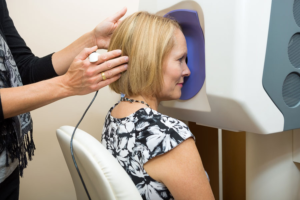
This hefty machine can sound like a jet engine, but what is it actually doing? We’re going to dive deep into this incredible piece of equipment – what it does, why your doctor wants it, and how it does it! Join us for this entry in our series about eye testing and an Optomap.
What is an “Optomap”?

An Optomap is a special version of a “fundus” photograph.
A “fundus” is defined as the part of a hollow organ furthest from the opening.
In the eye, the fundus is the area of the retina that contains the macula, optic nerve head, and many visible arteries and veins.
We’ve been doing fundus photography since 1861, shortly after the invention of photography itself!
What does an Optomap Show?
What really makes the Optomap special is how MUCH of the fundus it shows.
When your doctor is looking at your eye with the microscope, they see about 10° of the fundus. They need to move their microscope, move the lens, and often have you move your eye to see all the different structures.
Traditional fundus cameras expand this view to 45° at a time.
An Optomap shows 200° of the fundus in one scan that takes seconds.

Why Does My Doctor Order an Optomap?
Many diseases and abnormal anatomy are found in the fundus. It contains the retina, blood vessels, and optic nerve. Tracking any abnormalities can help your doctor determine if any disease is getting worse. That means we can offer interventions sooner to keep your eyes as healthy as possible.
Some examples of conditions your doctor may track with an Optomap are diabetes, macular degeneration, and glaucoma. We can also monitor changes to blood vessels from high blood pressure, keep track of a nevus (freckle) to ensure they’re non-cancerous, and look at floaters.

What is it Like?

Your skilled technician will guide you through the steps!
Specific head positioning is required for high quality photographs. We may need to help align you in the machine with a gentle touch on the back of your head.
Once your head is positioned properly in the headrest, your only job is to look at a fixation light. You may blink normally, though your technician may ask you to open wide for a few seconds.
It’s a relatively bright light and it’s normal to see spots in your vision for a short time after.
It takes us longer to enter your information in the machine than it does to take the pictures!
Summary
We hope this article has helped you understand what an Optomap is, why your doctor might order it, and how easy it is to do. We’re always happy to answer more questions during your visit.